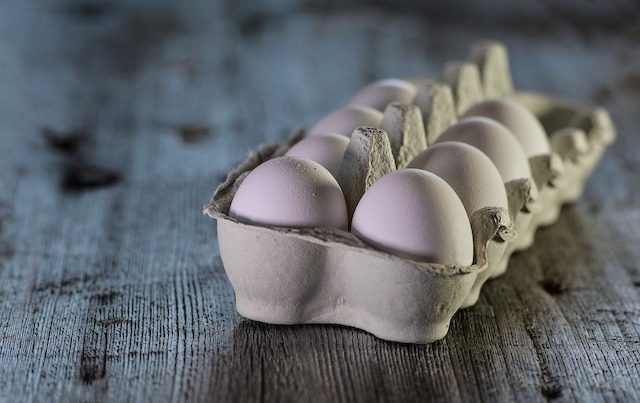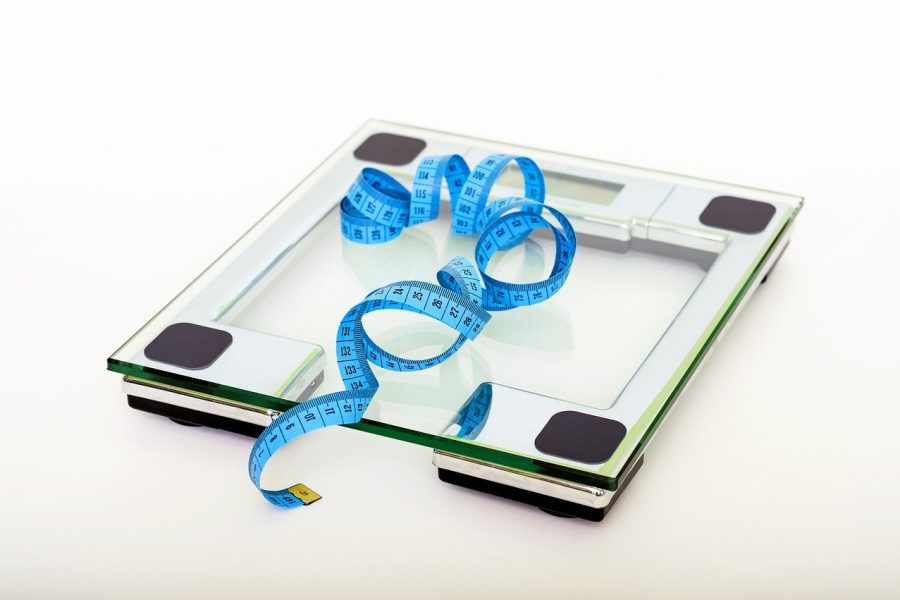The vitamin and mineral industry is worth more 37 billion dollars , which is why many people make big money on chewable vitamin C and calcium supplements. We like to believe that we can maintain a healthy balance of all the elements we need to live a full, healthy life, but how much of each element do we have inside us? It turns out that we have a surprising amount of the most basic elements, which, taken out of context, really puts into perspective just how amazing the human body is.
10. From 3 to 5 grams of iron

"Hardware helps us play," it says. "The Simpsons" , and we all know that iron can be obtained from liver, spinach, and the like, even if not everyone understands why it’s important. For reference, iron is an essential part of the hemoglobin in your blood, which allows red blood cells to carry oxygen through your body. Not having enough iron means you become anemic and feel tired, easily out of breath, and weak.
In the body of the average adult at any given time contains from 3 to 5 grams iron, which is from 3000 to 5000 milligrams. This is somewhat ironic, given how iron toxicity works. Too much iron can make you sick or even kill you, which is why iron supplements warn against taking too much. Iron toxicity can be defined as a dose of as little as 60 milligrams per kilogram of body weight, and 120 mg/kg may be considered fatal.
North Americans have the highest average body weight of about 80 kg , while in Asia it is 60 kg. This means that a lethal dose of iron can range from 7200 to 9600 mg, and a toxic dose is half of that, from 3600 to 4800 mg. This means that the average person has enough iron inside them, from 3000 mg to 5000 mg, to cause iron poisoning in someone else. Let this be a lesson to all cannibals.
From a more practical standpoint, if you want to use this iron, it's potentially worth knowing that your average nail weighs 0.79 grams and contains 97% iron , if it is made of steel. So, about 0.76 grams per nail, which means that 6.5 nails can be made from human iron.
9. 10% by mass of hydrogen

The mass of a person is slightly less 10% hydrogen . Most of it is in water and other chemical compounds, of course we are not just walking bags of flammable gas. But if it was gas, what could you do with it? If it is 10% by mass, then for a 150 pound person that is 15 pounds of hydrogen. If convert hydrogen mass in pounds to the volume of hydrogen in cubic feet, then 15 pounds of the stuff would be converted into an impressive 2,868 cubic feet. But what does that mean?
Hydrogen was once used for airships because it provides better lift than even helium. Yes, it is also highly flammable and explosive, so it has also fallen out of use. But hydrogen offers 68 pounds of lift per 1,000 cubic feet gas. That means the 2,868 cubic feet of hydrogen you can find in a 150-pound person has enough lift to lift 195 pounds off the ground. So you have enough hydrogen in your own body to fly away. In theory, anyway.
8. 140 grams of sulfur

Sulfur is not an element that people tend to look for very often, you don't see many sulfur-boosting recipes advertised as health foods, but at any given time, you have 140 grams of it in your body substances . . Sulfur is actually important for building and maintaining DNA and therefore to combat certain types of cancer.
Sulfur is perhaps best known for its odor, which is said to resemble the smell of rotten eggs. This is because eggs contain large amounts of sulfur, about 50 milligrams in the white and another 25 milligrams in the yolk. That's a total of 75 milligrams per egg, and if you have 140 grams, or 140,000 milligrams, you're carrying the sulfur equivalent of 1,867 eggs.
In terms of what else you can use sulfur for, we can stay on the farm near the chicken eggs and look at the crop. Sulfur can be used as a pesticide, and at the lower end of the scale you need 10 pounds to cover an acre of farmland to protect it from pests. At 454 grams per pound and 43,560 square feet per acre, you have enough sulfur to treat about 1,452 square feet of crops.
7. 200 grams of sodium

We've probably all heard about the dangers of a high sodium diet and know that we should watch our salt intake just to be safe. It would be very rare for someone to be deficient in sodium, but you need a certain amount to help with nerve impulses and muscle use . For a 50-kilogram person in the body near 200 grams or 40 teaspoons salt. How much salt is this?
Based on the nutritional information Leys provides, you might want to add salt 147 eight ounce bags regular potato chips with that much sodium. If you're more of a fast food person, you can spice up the impressive 198 Big Macs from McDonalds.
Of course, that's a 50-pound person, which is about 110 pounds, and as we've seen, the average American weighs 80 kilograms, which means most people have about 320 grams of sodium, or 64 teaspoons. That would put you at 235 bags of Lays or 317 Big Macs.
6.4 grams of sugar.

So, it's not an element, but we've covered salt, so why not look at sugar. It's also an important part of maintaining health. The average person at any given time in the blood contains about four grams of sugar . It's surprising that it's so low since glucose is what your cells use for energy, but it shows how efficiently your body uses energy.
Consider how much sugar a person consumes per day, and the figure becomes much more impressive. For example, a can of cola contains 39 grams of sugar , which is almost ten times more than what is in your body at any given time. You will need three cups of Cheerios to get that much sugar.
5.0.2 mg gold

Who wouldn't want a little more gold? The price fluctuates from day to day, but these days a gram of gold costs on average about $50 per gram. That means a mg of gold costs about a nickel. And right now, as a living, breathing human being, inside you 0.2 milligrams of gold , which is worth about a penny. In fact, it's a little more than the gold you'd find in a cell phone, which contains 0.034 grams , and people constantly collect it to obtain gold.
The small amount of gold inside you plays an important role in joint health as well as in the transmission of electrical signals.
A standard gold bar, those bricks you see in movies stacked in bank vaults, is called a bullion bar. good delivery and weighs 400 troy ounces or about 12.4414 kg. That's 12,441,400 mg. At 0.2 mg of gold per person, you could make your own Good Delivery bar if you collected gold from 62,207,000 people.
4. 1% of your weight is phosphorus

Phosphorus is another one of those chemicals that can be very dangerous, but we still need a small amount to survive and be healthy. By weight, we have about 1% phosphorus , so a 150-pound person would have 1.5 pounds or 680 grams of phosphorus, and an 80-pound person would have 800 grams or 1.77 pounds. It is needed for cell growth and maintenance, as well as DNA production. Ironically, white phosphorus can be deadly when dose from 50 to 100 milligrams , which is obviously much less than what is already contained within you.
Yellow phosphorus was once used to light matches anywhere in the world. 1 milligram per match head That's equivalent to 680,000 to 800,000 match heads if you collected all the phosphorus in the human body.
3. 95 grams of chlorine

Chlorine is not a substance you would ever want to put into your body, but you do need some of it in other chemical compounds. At any given time, you have about 95 grams chlorine. It's found in your blood, bones, and tissues, and you get it into your body from sodium chloride, better known as salt.
The most common use of chlorine outside the human body is in the form of bleach, but bleach is only a diluted solution. In fact, bleach contains only 5,25% chlorine , and one gallon is equal to about 3785.41 grams. This is a measurement for water, so our numbers will be a little shaky due to density, but they should be approximate.
At 5.25%, this means that a gallon of bleach contains about 198 grams of pure chlorine. Based on a body weight of 95 grams, you have enough chlorine to make half a bottle of bleach.
2. 16 kg of carbon

When it comes to human mass, after oxygen, you are mostly carbon. A little less 23% of your body — is carbon, and for a person weighing 80 kg, that means a total of 16 kg. One of the most common uses of carbon in everyday life is pencils, which use carbon in the form of graphite. Even the wood of a pencil contains carbon, slightly more than graphite. This varies from brand of pencil to brand of pencil, but at least one type of pencil is estimated to contain 3.17 grams carbon on a pencil.
If you were so inclined to sacrifice your body for the benefit of pencils in the future, you would donate the equivalent of 5,047 pencils of carbon.
1. 1 kg of calcium

You need calcium for your bones and teeth, we've all been told that since we were very little. Milk is the most common source of calcium for many of us, and as mammals, we're more or less designed to have milk as our primary food source from birth.
Your body contains about 1.5% of calcium, so an 80-pound person spends about one kilogram pure calcium. An eight-ounce glass of milk contains only 300 milligrams calcium, meaning you'd need to drink just over three to get your daily 1,000-milligram intake. But that also means you're already walking around with about 3,333 cups of calcium from milk.
If you don't like milk and prefer processed cheese, a slice of Velveeta, labeled as a good source of calcium, contains 160 milligrams This means that your body contains the equivalent of 6,250 slices of Velveeta.














Оставить Комментарий